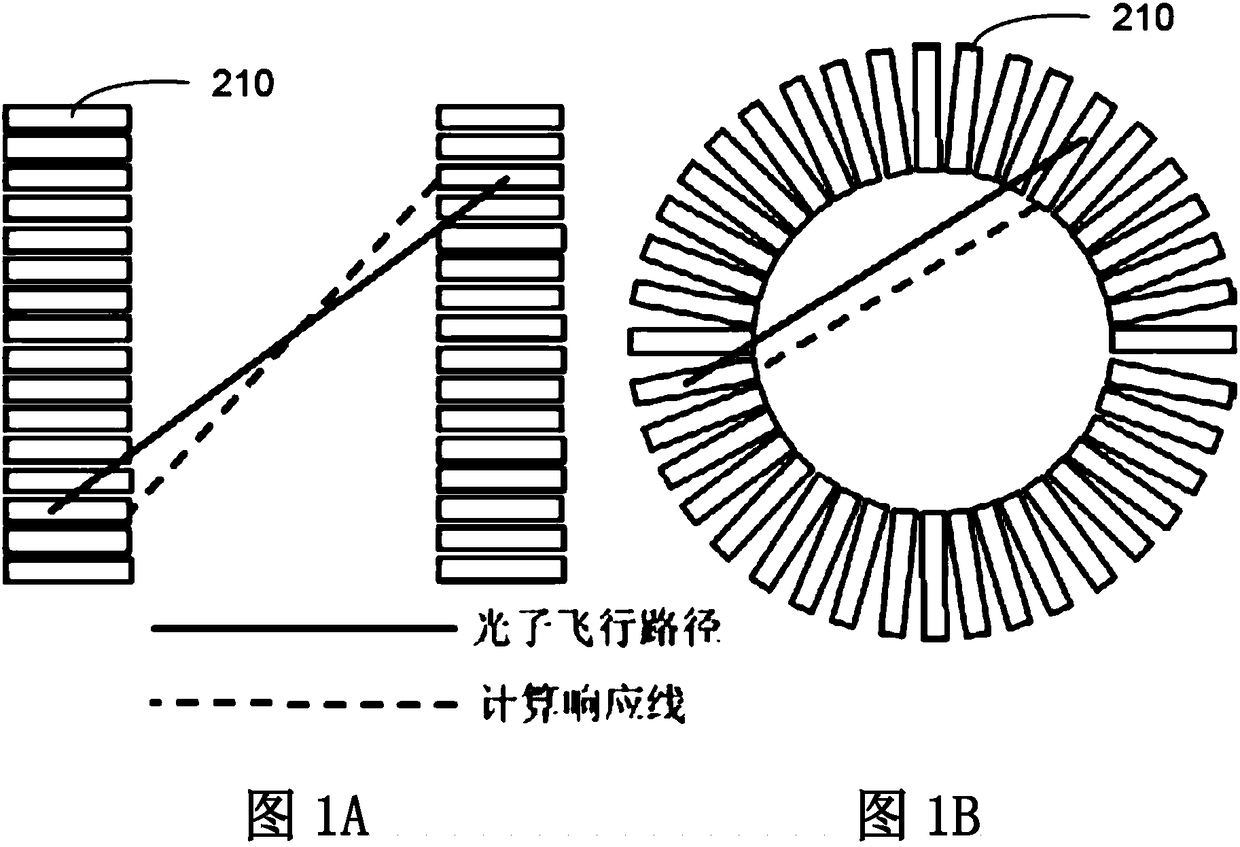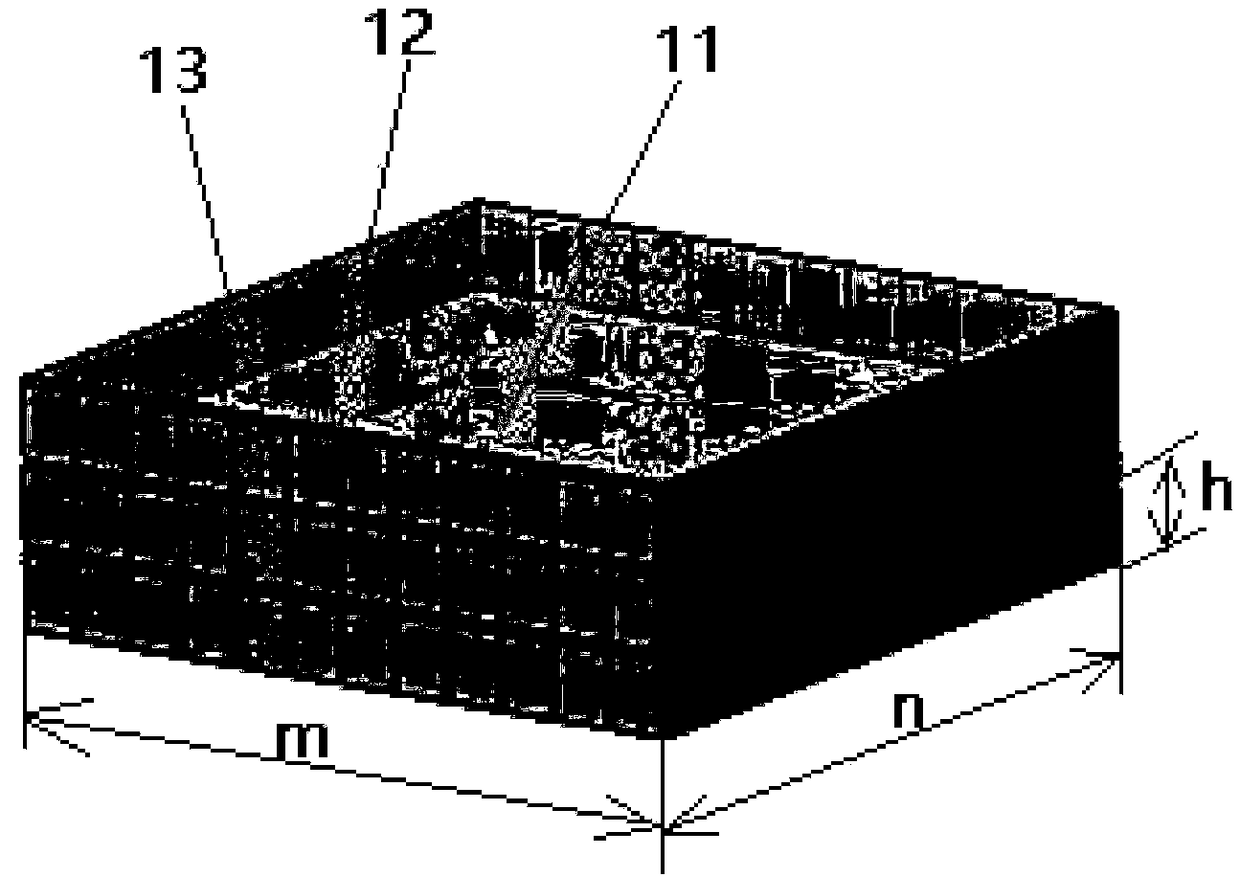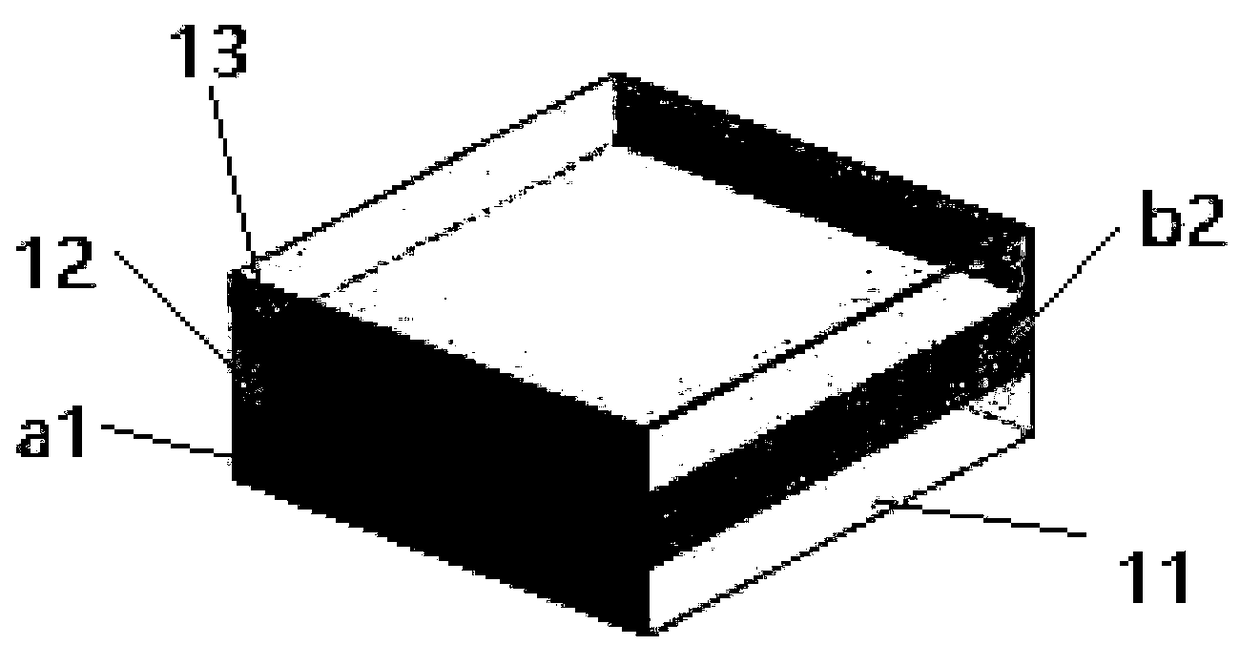Detector and emission imaging device having same
A technology of imaging equipment and detectors, which is applied in the direction of instruments, measuring devices, scientific instruments, etc., can solve the problems of weakening of acquisition signal strength, development limitations, increase in the number of detector channels, etc., and achieve the potential of simple structure and high performance time measurement Effect
- Summary
- Abstract
- Description
- Claims
- Application Information
AI Technical Summary
Problems solved by technology
Method used
Image
Examples
no. 1 example
[0037] Taking three layers of scintillation crystals as an example, a detector in which a row of photosensor arrays is coupled with a layer of scintillation crystals is introduced in detail.
[0038] combined reference figure 2 , the detector includes three layers of scintillation crystals 11, 12, 13 and multi-row photosensor arrays a1, a2, a3, a4..., c3, c4, and the three layers of scintillation crystals are defined as 11 layers, 12 layers, 13 layers from bottom to top layer.
[0039] The size of the single-layer scintillation crystal is m×n×h (m is the length of the scintillation crystal, n is the width of the scintillation crystal, h is the height of the scintillation crystal, m>3h and n>3h), and the three-layer scintillation crystal is stacked up and down together form a multi-layer continuous crystal array, the multi-layer continuous crystal array has six faces, and the size is mⅹnⅹAh, the four faces corresponding to the size nⅹAh and mⅹAh are the side faces, and the tw...
no. 2 example
[0057] In the first embodiment, a row of photosensor arrays is shown as a detector coupled with one layer of scintillation crystals. In practical applications, the detector can also be a row of photosensor arrays coupled with two layers of scintillation crystals. A row of photosensor arrays will be described in detail below. A photosensor array is dislocation-coupled to a detector of a two-layer scintillation crystal.
[0058] refer to Figure 4a , taking three layers of scintillation crystals as an example, the detector includes three layers of scintillation crystals 11, 12, 13 and four rows of photosensor arrays b1, b2, b3, b4, and the three layers of scintillation crystals are defined as layers 11, 12 from bottom to top layer, 13 layers.
[0059] The size of the single-layer scintillation crystal is m×n×h (m is the length of the scintillation crystal, n is the width of the scintillation crystal, h is the height of the scintillation crystal, m>3h and n>3h), and the three-la...
no. 3 example
[0075] In the second embodiment, a row of photosensor arrays is shown as a detector coupled with two layers of scintillation crystals. In practical applications, the detector can also be a row of photosensor arrays coupled with three layers of scintillation crystals. A row of photosensor arrays will be described in detail below. The photosensor array is dislocation-coupled with three layers of scintillation crystal detectors.
[0076] Such as Figure 5a and Figure 5b As shown in , it shows a detector structure of a row of optical sensor arrays coupled with a three-layer scintillation crystal, in which, Figure 5a A detector with a five-layer scintillation crystal is shown, Figure 5b Shown is a detector with eight layers of scintillation crystals. When there are five layers of scintillation crystals, the photosensor array a1 is coupled with the 11th, 12th, and 13th layers of scintillation crystals, and the photosensor array b1 is coupled with the 12th, 13th, and 14th layer...
PUM
 Login to View More
Login to View More Abstract
Description
Claims
Application Information
 Login to View More
Login to View More - R&D
- Intellectual Property
- Life Sciences
- Materials
- Tech Scout
- Unparalleled Data Quality
- Higher Quality Content
- 60% Fewer Hallucinations
Browse by: Latest US Patents, China's latest patents, Technical Efficacy Thesaurus, Application Domain, Technology Topic, Popular Technical Reports.
© 2025 PatSnap. All rights reserved.Legal|Privacy policy|Modern Slavery Act Transparency Statement|Sitemap|About US| Contact US: help@patsnap.com



